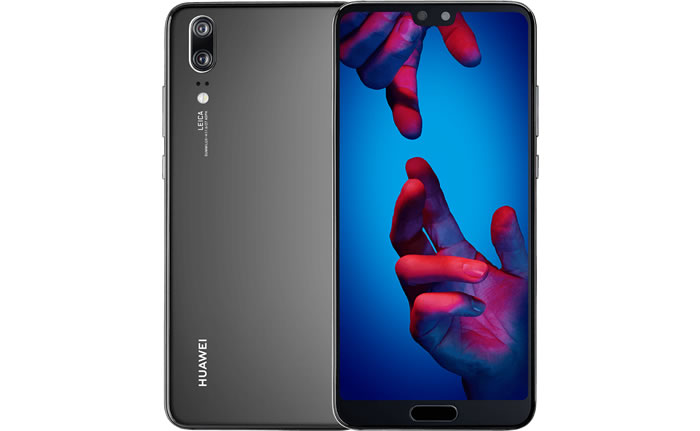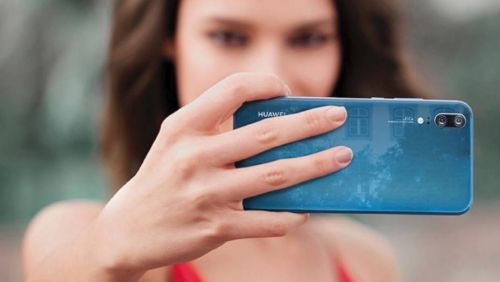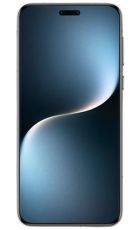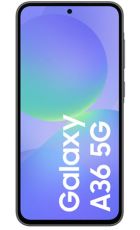
The Huawei P20 is one of two new flagships from the company, along with the triple-lens Huawei P20 Pro, and while that phone is even higher end make no mistake, this is a high-end handset that goes beyond just box-ticking by offering a truly great camera and design.
All that and it’s not the priciest flagship phone around either, but the Huawei P20 is still far from perfect, and depending on what you want from your phone you might want to think twice before buying it, for reasons that are explained below.
So read on to find out all that’s good and bad about Huawei’s latest Galaxy S competitor.
Screen
The Huawei P20 has a 5.8-inch 1080 x 2240 screen with a pixel density of 429 pixels per inch. That’s big and fairly sharp, but no match for the QHD display offered by rivals like the Samsung Galaxy S9.
The Huawei P20 also uses LCD rather than OLED, so contrast isn’t as good as on some rival handsets, but this is still a high-quality display and one with almost no bezel, instead opting for the currently popular route of putting a notch at the top.

And if you’re not a fan of notches it’s worth noting that you can hide it, as there’s a setting that adds a black bar to either side. This leaves you with less useable screen and essentially more bezel, but means the display becomes a true rectangle.
Another highlight of the P20’s screen is that you can customise the colours, so if you want it to be more or less vibrant for example that’s doable. There are limits of course, but you should be able to find a balance that you’re happy with.
Design
The Huawei P20 is familiar in some ways, sporting a glass back and metal frame like most recent flagships, but it stands out through an optional gradient finish, available on the twilight and pink gold shades of the phone, which makes the phone appear a different colour depending on the lighting or the angle you hold it at.

It’s a striking look, though there are more ordinary options available too, and the general build quality of the phone is high as well, though note that it’s not water or dust resistant and it can be slippery in the hand.
Still, it’s a premium design overall, especially as it’s also slim at just 7.7mm thick and there’s very little bezel around the screen.
Power
This is one area of the Huawei P20 that’s slightly disappointing, as the phone has an octa-core Kirin 970 chipset. That has four cores clocked at 2.36GHz and four running at 1.8GHz, so it’s quite speedy, but it’s no match for the likes of the Snapdragon 845 found in phones such as the Sony Xperia XZ2.
And there’s good reason for that: the Kirin 970 actually came out in 2017 and can be found in the Huawei Mate 10 and Huawei Mate 10 Pro. For a new Huawei chipset, you’ll probably have to wait for the next entry in the Mate range.
Still, in practice performance is smooth and helped by 4GB of RAM, which itself is now about the least we’d expect from a flagship, but which gets the job done.
The Huawei P20 runs Android 8.1, so it’s up to date there, but it’s overlaid with Huawei’s own EMUI 8.1 interface, which strays quite far from stock Android. The main difference is that as standard there’s no app drawer, but you can enable one with a trip into the settings screen.
Camera
The camera on the other hard is one of the highlights of the Huawei P20, as although its lacks its sibling’s fancy triple-lens camera, it’s still got one of the best dual-lens snappers around.
There’s a 12MP colour lens with an f/1.8 aperture and a 20MP black and white lens with an f/1.6 aperture. You can combine image data from the two for more detailed shots, and they can also be combined to allow for 2x hybrid zoom.
Another highlight of the P20’s camera is its night shooting abilities, as it uses AI to help you take incredibly impressive (for a smartphone) low light shots.

Speaking of AI, that seeps into every aspect of the camera, most notably in its ability to detect what you’re taking pictures of and optimise the settings. The P20 can also shoot 4K footage, as well as 720p slow motion footage at 960fps.
Overall, it’s one of the best cameras you’ll find on a smartphone, and along with the P20 Pro perhaps the best for low light shooting. There’s even a 24MP camera on the front, which allows for selfies packed full of detail.
Features
The Huawei P20 has a handful of notable features beyond the things covered above. For one thing it has a fingerprint scanner, as you’d expect, and unlike many recent phones it’s placed on the front in an ideal position under the screen.
The phone also offers loud audio powered by Dolby – though the speaker isn’t as good as on, say, the iPhone X or Pixel 2. It’s worth noting also that the P20 doesn’t have a headphone jack, so if you don’t want to rely on the speakers you’ll need to use Bluetooth headphones or an adaptor.
Battery life, memory and connectivity
There’s a 3,400mAh battery inside the Huawei P20, which is an above average size and leads to life of over a day with moderate use.
The phone also supports fast charging, so you can juice it up quickly, but there’s no wireless charging disappointingly.
There’s a massive 128GB of storage inside the phone, which is good, because there’s no microSD card slot, and for connectivity options you get 4G, Bluetooth 4.2 and NFC – so Android Pay works.

Verdict
The Huawei P20 is an impressive phone in many ways, most notably for its low light camera skills and its striking design.
In other ways though it’s more pedestrian. The screen and processor can’t match most rivals and while battery life is good it’s not class-leading.
Of course, the Huawei P20 can also typically be picked up for less than rival flagships so if it’s the top end of your budget then it’s a good buy, but if you can stretch to something pricier then the likes of the Samsung Galaxy S9 Plus and indeed the Huawei P20 Pro are far better phones.










